Tom Cruise’s 20 Best Performances, from ‘Top Gun’ to ‘Mission: Impossible’ to ‘Magnolia’
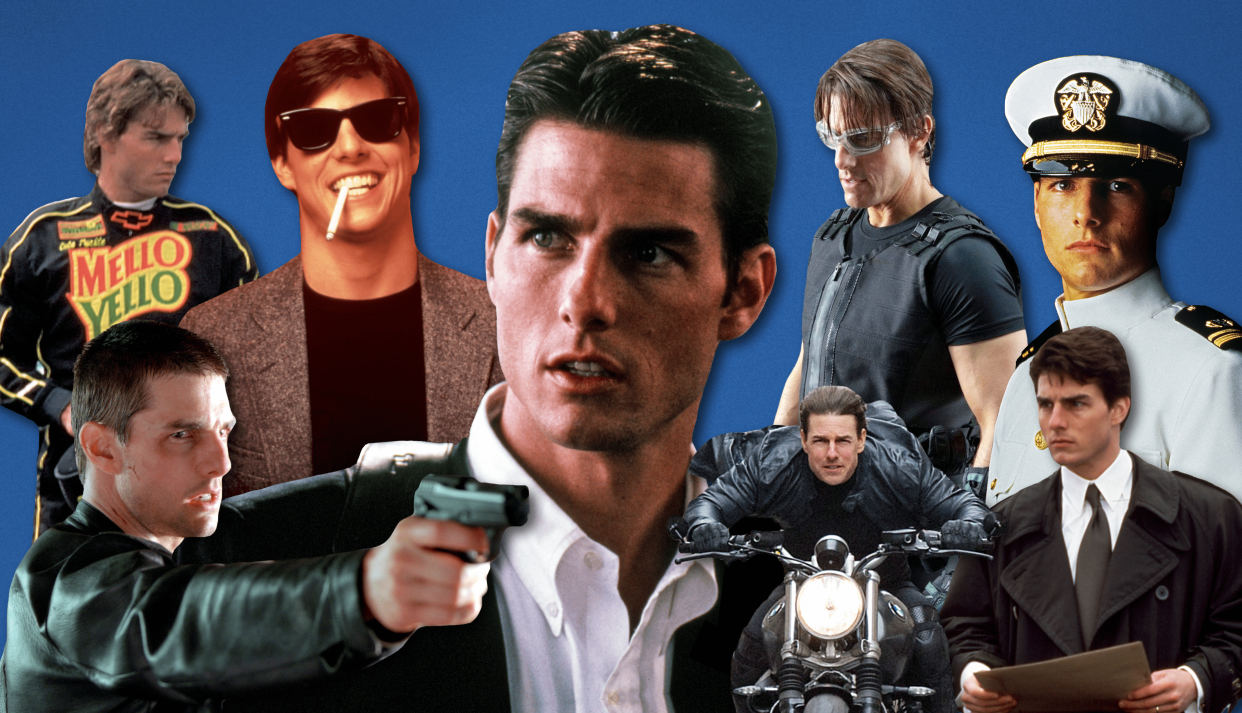
- Oops!Something went wrong.Please try again later.
- Oops!Something went wrong.Please try again later.
- Oops!Something went wrong.Please try again later.
- Oops!Something went wrong.Please try again later.
In February, a clip went viral of Steven Spielberg telling Tom Cruise at an Oscars luncheon that he “saved Hollywood’s ass.” Spielberg was referring to the explosive success of Cruise’s return to the pilot seat in “Top Gun: Maverick.” Released in May 2022, the long-awaited sequel was the top earner at the domestic box office last year, raking in over $700 million in the United States. It was the shot in the arm that cinemas needed after the pandemic, and proof positive of Cruise’s enduring appeal as both a marquee movie star and skilled actor — two bona fides not always packaged together so successfully.
Cruise has been leveraging looks and charm, and flexing his blockbuster muscles, for decades. Going all the way back to the early 1980s, his appeal never seems to age, even at 61 years old. He’s skillfully shepherded original movies as a star and producer, never falling into the trap of IP except, of course, with the franchises that are entirely his: “Top Gun,” “Mission: Impossible,” and “Jack Reacher.”
More from IndieWire
While some may say that Cruise’s sculpted movie star image lacks a certain vulnerability, many of the films below showcase his gifts for dramatic acting, proving him more than just a deft maneuverer of box office and death-defying stunts — though he is, of course, all those things.
Cruise may in fact be the Last Movie Star in a time where such a nomenclature doesn’t really mean much anymore. He’s worked with smart directors — from Martin Scorsese to Steven Spielberg, Paul Thomas Anderson and Stanley Kubrick — often chasing them down himself with a wicked idea or hopes for a collaboration. He’s thrived and held his own alongside iconic movie stars in classics, from Jack Nicholson in “A Few Good Men” to Paul Newman in “The Color of Money,” and even in duds alongside the likes of Meryl Streep and Robert Redford (“Lions for Lambs,” anyone?).
As we saw from the way he stood up against COVID rule-breakers on the set of “Mission: Impossible 7,” he cares about his collaborators and the work. And with “Dead Reckoning Part One” heading to theaters this week, Cruise has a brand new chance to showcase his charisma and talent for pulling off death-defying stunts onscreen.
While it’s hard to pick favorites across a career so stacked with iconic titles, we went back through Cruise’s filmography to pick his 20 best performances, starting with “Risky Business” in 1983 all the way to now with “Top Gun: Maverick.” Entries are listed chronologically, with exceptions made for franchises.
Samantha Bergeson, Christian Blauvelt, and Kate Erbland also contributed to this story.
“Risky Business” (1983)
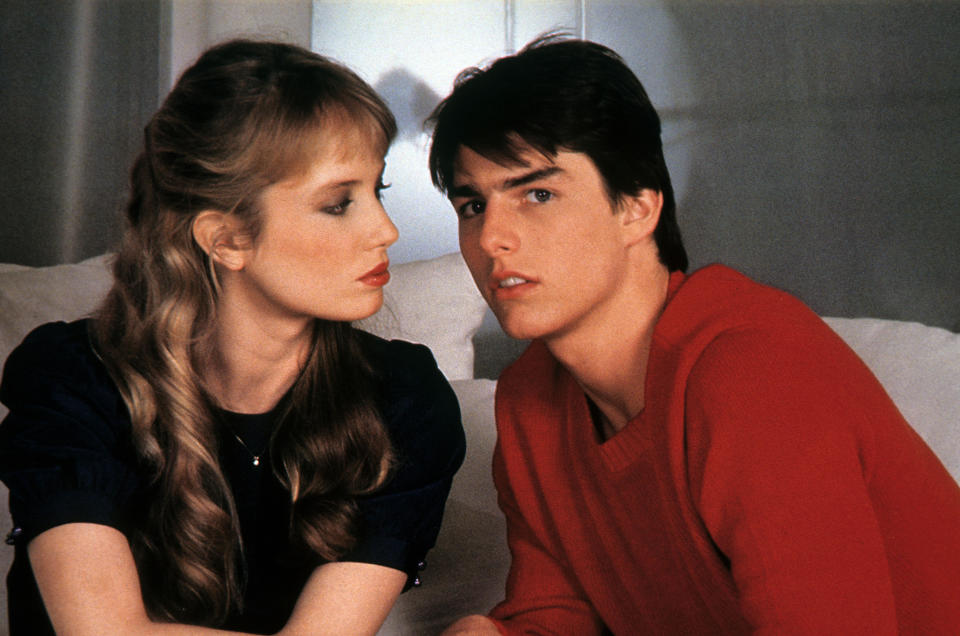
Few actors embodied the ‘80s as a time of simultaneous repression and entitlement like Tom Cruise in “Risky Business.” Paul Brickman’s capitalist satire, with its silky Tangerine Dream score and night cinematography by Bruce Surtees and Reynaldo Villalobos worthy of a Wong Kar-Wai movie, finds Cruise’s high school senior Joel having sex with a call girl (Rebecca De Mornay) on a dare and getting entangled in her orbit until he’s running a brothel from his house. He certainly expresses both an attraction and terror about losing his virginity, but morality or prudishness about profiting from sex workers? Hardly, despite the white-collar suburban setting. That is, after all, a world of materialism, of transactions, and running a brothel out of one’s home isn’t transgressive — it’s entrepreneurship. Or “human fulfillment,” the corporate buzzword label Joel gives it.
Cruise, just 20 at the time, effortlessly rocked those Ray-Bans and button-down shirts, and had as iconic a “star-making” moment as any ever, when he lipsyncs Bob Seger’s “Old Time Rock & Roll” in his underwear. But the central tension of his career was there from the start: in this story about sex and rebellion being appropriated by capitalism, as they always are, Cruise established his appeal not as an outsider, but as the ultimate insider. Nevertheless, no one has ever made hegemony look cooler than Cruise. —CB
“Top Gun” and “Top Gun: Maverick” (1986, 2022)
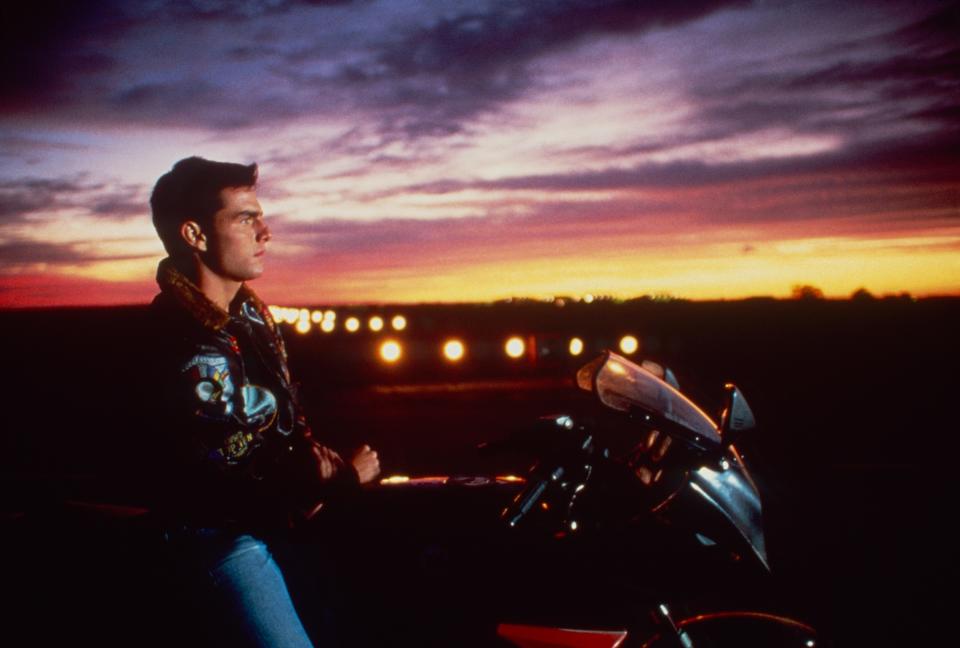
Tom Cruise is both a great actor and a great movie star, two jobs that often overlap but don’t necessarily have to. The first “Top Gun” is a quintessential movie star performance from Cruise, relying more on excellent vibes than challenging character work. Pete Mitchell, aka Maverick, is a brilliant but cocky pilot, and we’re occasionally reminded that he’s tortured by the death of his father. But really, the movie is an excuse for Tom Cruise to wear cool sunglasses and leather jackets while he operates cool planes and motorcycles. No shame in that game, and Cruise can do it as well as anyone. But “Top Gun: Maverick” takes those good vibes and builds on them, and an aging Cruise turns the character into something much more three-dimensional as Maverick confronts the possibility of losing the life he has grown to love. Each movie is great in its own way, but the combination of the two serves as a perfect illustration of Tom Cruise’s unique set of skills. —CZ
“The Color of Money” (1986)
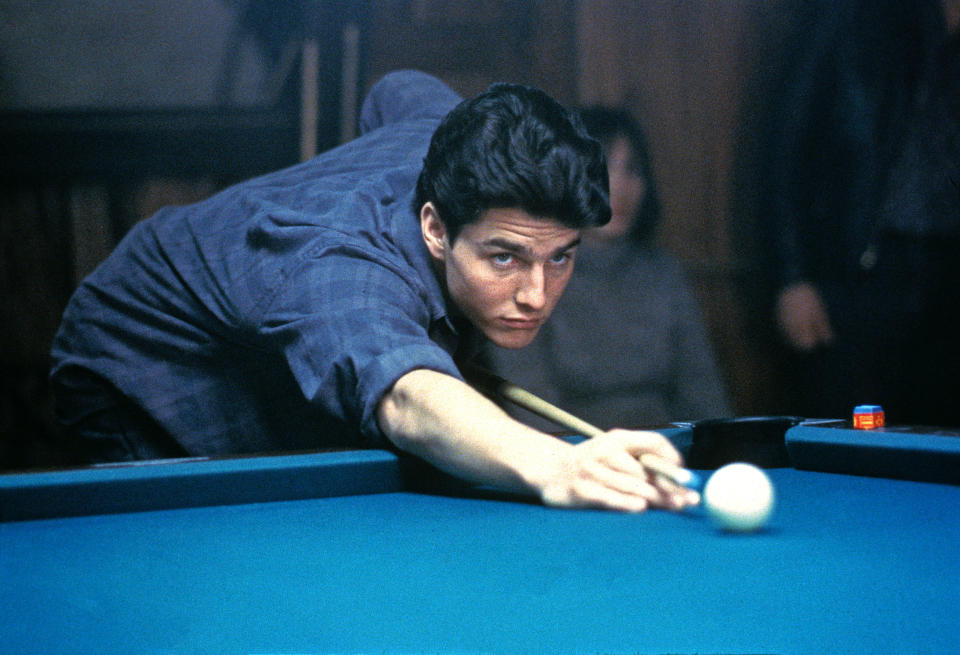
While 1986 might be best remembered in the annals of Tom Cruise lore as the year that gave us “Top Gun,” serious fans will be quick to remember that it was also the year that gave us the first — and so far, only — Martin Scorsese and Cruise joint. Scorsese hired Cruise for a demanding role: the hotshot (OK, maybe that part was easy) pool player protégé of Fast Eddie Felson (Paul Newman, returning to his “Hustler” role more than two decades after it notched him an Oscar nom).
All you need to know about Cruise’s performance as Vincent — beyond the fact that he’s the kind of character who, totally unironically, wears a T-shirt printed up with just his name in massive letters across the chest — is contained in the iconic “Werewolves of London” sequence. Vince faces off against a fierce competitor just for kicks, displaying wild cockiness, total resilience, and a major panache for pool-playing that shouldn’t surprise anyone up to snuff on his dedication to practical stunts. The actor practiced for months on end and ultimately completed nearly every one of Vince’s trick shots on his own, but that’s not even the marquee attraction here: instead, it’s Cruise’s full-force charm. “Top Gun” made the initial case, but “The Color of Money” sealed it. —KE
“Rain Man” (1988)
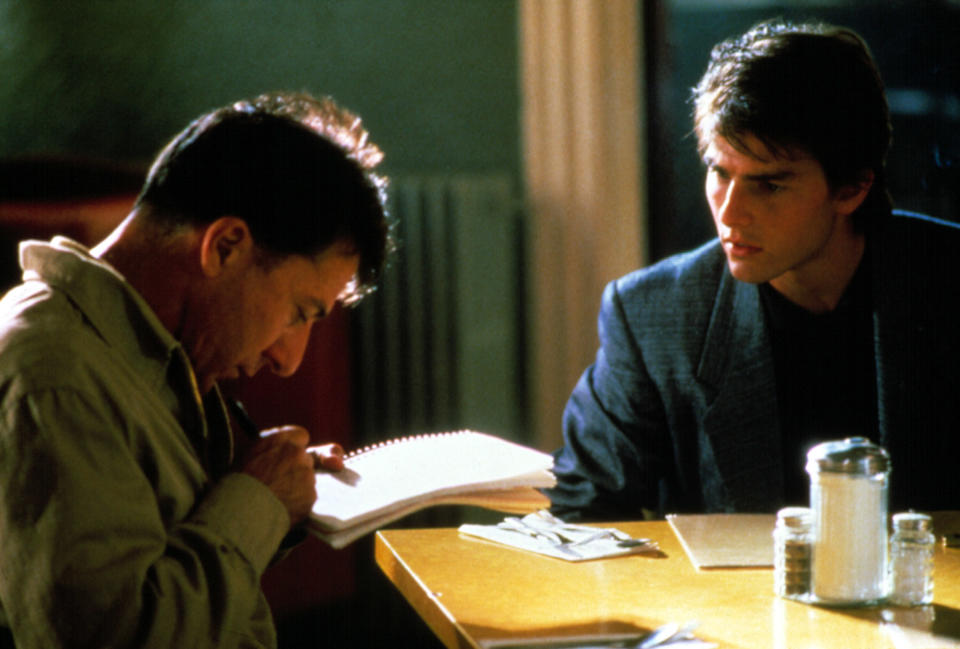
Barry Levinson’s “Rain Man” is (perhaps unfortunately) best remembered for Dustin Hoffman’s much-parodied performance as autistic savant Raymond, who is bequeathed the estate of his father and winds up on a road trip with a younger brother he’s never met. But the film’s central arc belongs to Cruise as that brother, Charlie. Even though Hoffman won the Oscar, it’s Cruise’s work in the film that lingers with you afterwards. Charlie begins as a selfish, unsympathetic yuppie, and Cruise has the tricky challenge of communicating an arc where he becomes protective and fond of Raymond. The actor manages it perfectly, giving one of the most vulnerable and open-hearted performances of his career. —WC
“Born on the Fourth of July” (1989)
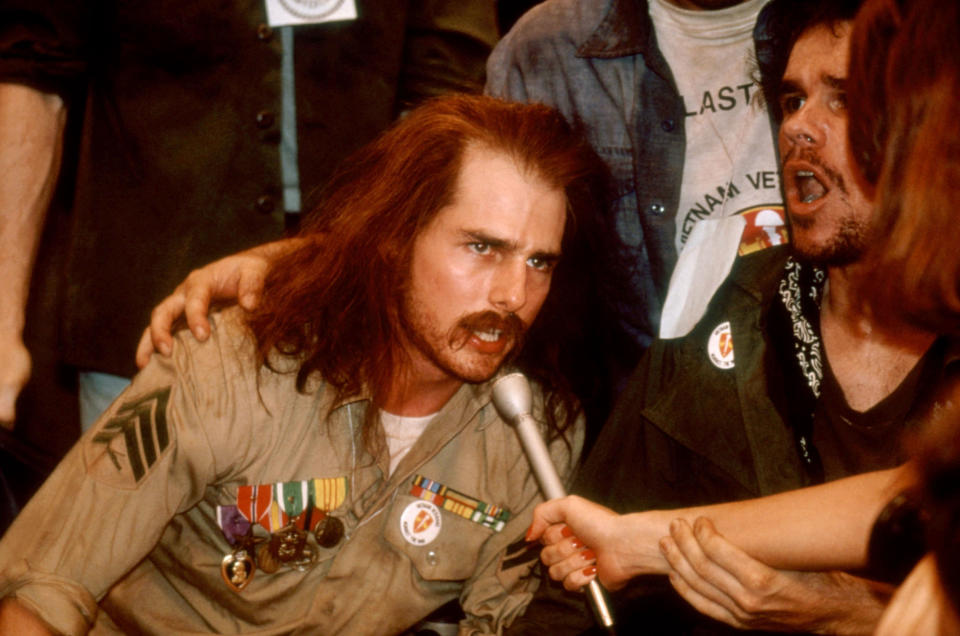
Based on Vietnam War veteran Ron Kovic’s autobiography, “Born on the Fourth of July” starred Tom Cruise as an anti-war activist grappling with PTSD after being paralyzed in military service. Kovic’s life is depicted over the course of two decades onscreen; fellow Vietnam vet Oliver Stone co-wrote the screenplay with Kovic and directed the Oscar-winning film. Despite Al Pacino originally being attached to the lead role, Cruise carved out his iconic performance and received his first Academy Award nomination. Stone went on to win for Best Director, with the film also taking home Best Editing.
Ron (Cruise) was a Marine sergeant deployed to Vietnam who led his unit to mistakenly kill villagers instead of enemy combatants upon his second tour of duty in 1967. Ron also accidentally kills a young private in his platoon but is advised to cover up the murder. The following year, Ron is discharged after being paralyzed from the waist down in battle. Suffering from guilt, trauma, and depression, Ron finds himself on a road to redemption and sets out to end the war. Willem Dafoe, Kyra Sedgwick, and real-life veterans and anti-war protesters starred in the film, which culminates in Ron’s speech at the Democratic National Convention in 1976, on the 200th anniversary year of the country’s founding and one of Cruise’s most rousing moments. —SB
“Days of Thunder” (1990)
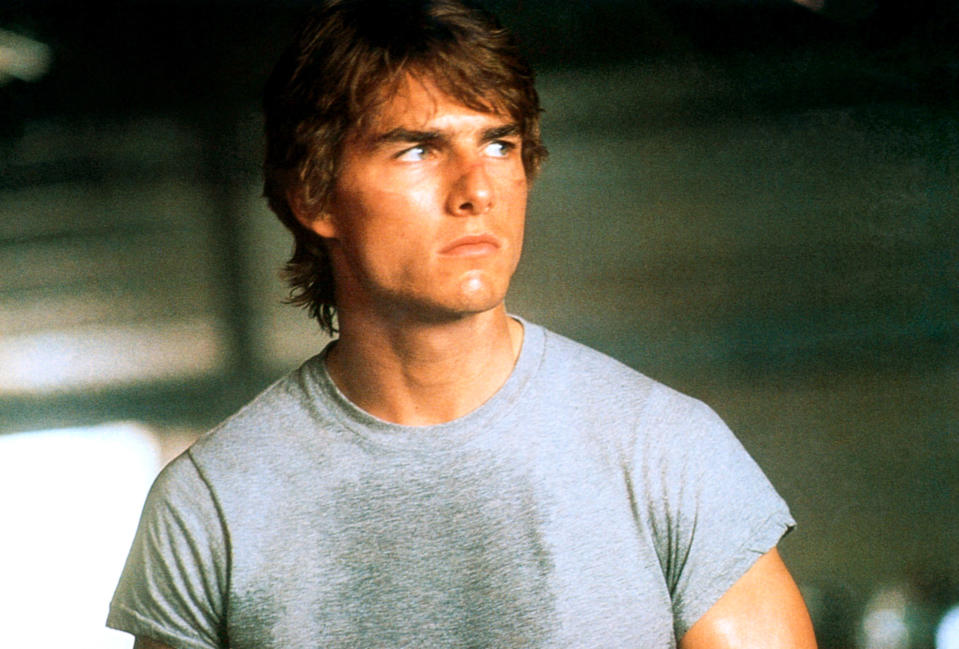
A sweat-soaked hotshot with a devil-may-care attitude and a taste for speed, danger, and zero gets handed a plum assignment that feeds all those desires and more. His love interest is smarter than him (and knows it). He rubs everyone the wrong way (including the similarly hotshot-y dudes also jockeying for a spot). He begrudgingly accepts a stately mentor. His unlikely best pal is grievously injured while on the clock. The soundtrack is a banger. Tony Scott directs.
No, this isn’t “Top Gun” — it’s the racecar drama “Days of Thunder,” which vroomed into theaters four years after the high-flying aviation hit, packed to the goddamn gills with the same elements that made the previous entry such a heart-pounder. As Cole Trickle, Cruise captures the same bravado and ballsy attitude as Pete “Maverick” Mitchell, but in a decidedly earth-bound conveyance.
And though “Days of Thunder” is a totally expected follow-up to “Top Gun” — complete with an early go-for-broke performance from Cruise that accurately predicted his dedication to practical stunts whole decades ago — his work on the film boasts one key difference: to date, it’s the only film Cruise has a screenwriting credit on. It’s shared, but that only makes “Days of Thunder” feel like more of a must-see curiosity, because Cruise’s co-writer is so very unexpected: Robert Towne. Now that’s different. —KE
“A Few Good Men” (1992)
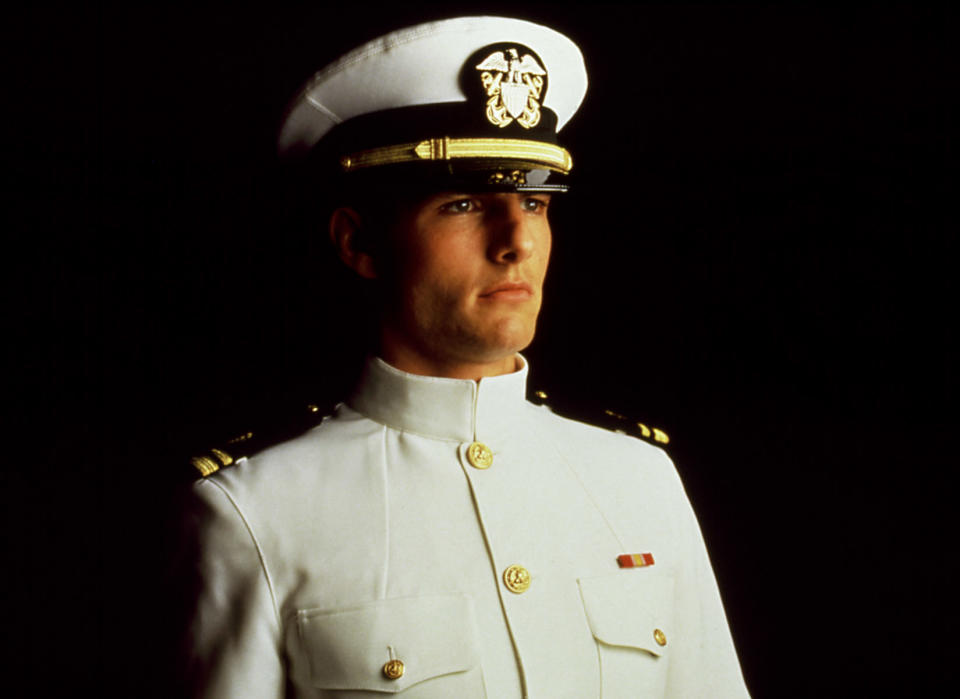
“The Firm” meets “Top Gun” is probably the simplest way to explain Aaron Sorkin’s complicated legal drama starring Tom Cruise and directed for the screen by Rob Reiner.
Cruise plays Lieutenant Daniel Kaffee, a military attorney who is assigned a murder case involving three Marines. Demi Moore is Kaffee’s fellow lawyer Lieutenant Commander JoAnne Galloway who questions Kaffee’s motives and approach to the case.
The duo question officers at Guantanamo Bay as they uncover a conspiracy involving corrupt witness accounts and bogus testimony.
Jack Nicholson stars as Colonel Nathan Jessup, who defends the practices of his Marine unit, and Kevin Bacon, Kiefer Sutherland, Noah Wyle, and Cuba Gooding Jr. round out the ensemble cast.
The film was applauded by critics upon release in 1992, with its acclaim marking the Cruise star vehicle as the “anti-‘Top Gun.’” “A Few Good Men” was nominated for four Academy Awards, including Best Picture. —SB
“The Firm” (1993)
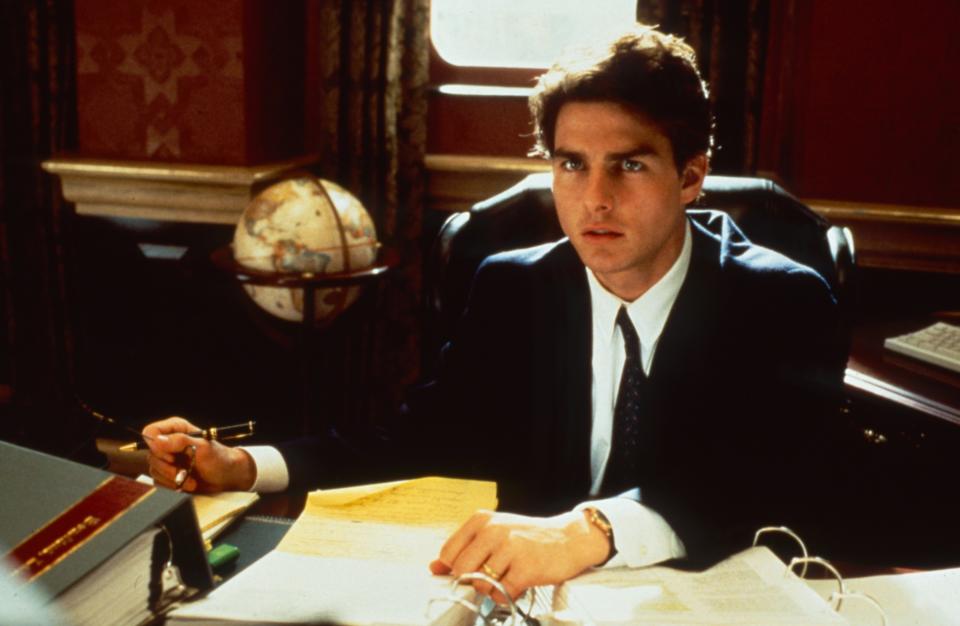
John Grisham, Tom Cruise, and an erotic thriller by the (legal) book? The 154-minute running time for “The Firm” is worth every heart-pounding second as Cruise becomes entangled in a conspiracy of wealth, greed, and negligence in the ‘90s classic. In peak Cruise hit-making era, the 1993 film stars the blockbuster actor as Mitch McDeere, a recent Harvard Law School graduate who accepts a lucrative offer from a prestigious Tennessee law firm. Yet as Mitch’s thirst for money and power proves insatiable, his relationship with his wife Abby (Jeanne Tripplehorn) falls apart thanks to the secretive nature of the titular Firm.
Gene Hackman plays Mitch’s boss Avery, while Ed Harris is an FBI agent using Cruise to expose the Firm’s corrupt offshore dealings and Chicago mob ties. Mitch’s legal prowess leads him to a private investigator (Gary Busey) and an ingenious secretary (Holly Hunter, who landed an Oscar nomination for the role) but leaves countless bodies in his wake. The cat and mouse thriller is anchored by Cruise’s signature smile and innate ability to build tension through his typically fierce determination to prove the truth. Call it Cruise’s good guy version of “American Psycho,” if you will, because you’ll never look at a lawyer the same way again. —SB
“Interview With the Vampire” (1994)
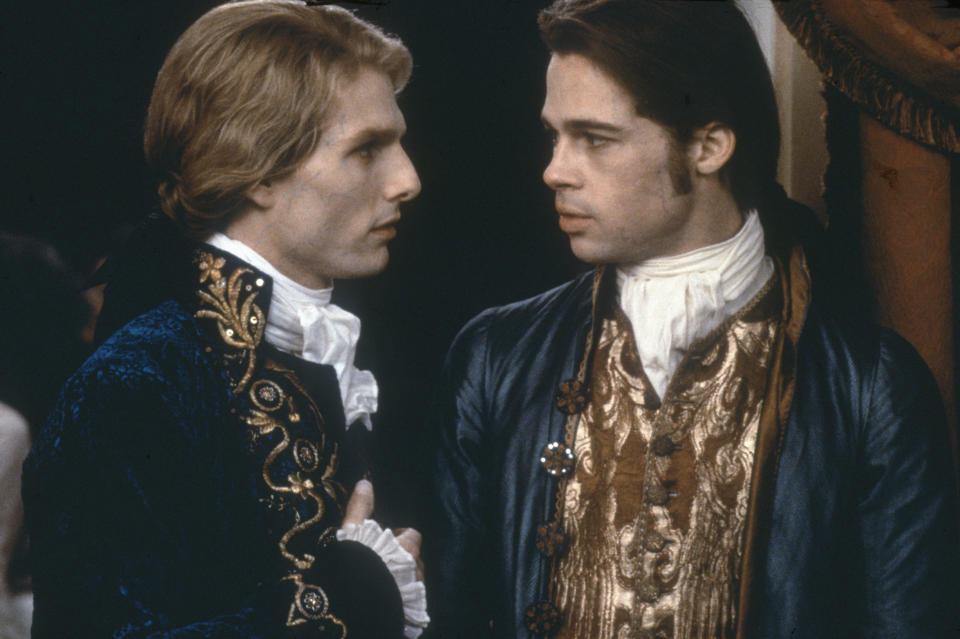
On paper, Cruise is an odd fit for the role of Lestat in 1994’s adaptation of Anne Rice’s classic vampire romance novel. A preening, aristocratic vampire, Lestat has a completely different presence than the hypermasculine heroes that have defined Cruise’s career. Even the long blonde ponytail he sports in the movie feels like a bizarro world version of the actor’s signature short dark trim. But perhaps getting cast against type is precisely what the often stoic Cruise needed to cut loose onscreen, because the actor has never been more fun to watch than he is in “Interview With the Vampire.” He plays Lestat like a predator constantly on the prowl, menacing and cold with an acidic wit, and develops a delicious rapport with Kirsten Dunst as his vampire daughter Claudia. The performance is everything people accuse Cruise of not being — relaxed, funny, alluring, sexy — which is why it’s one of his best. —WC
“Mission: Impossible” (1996 and onward)
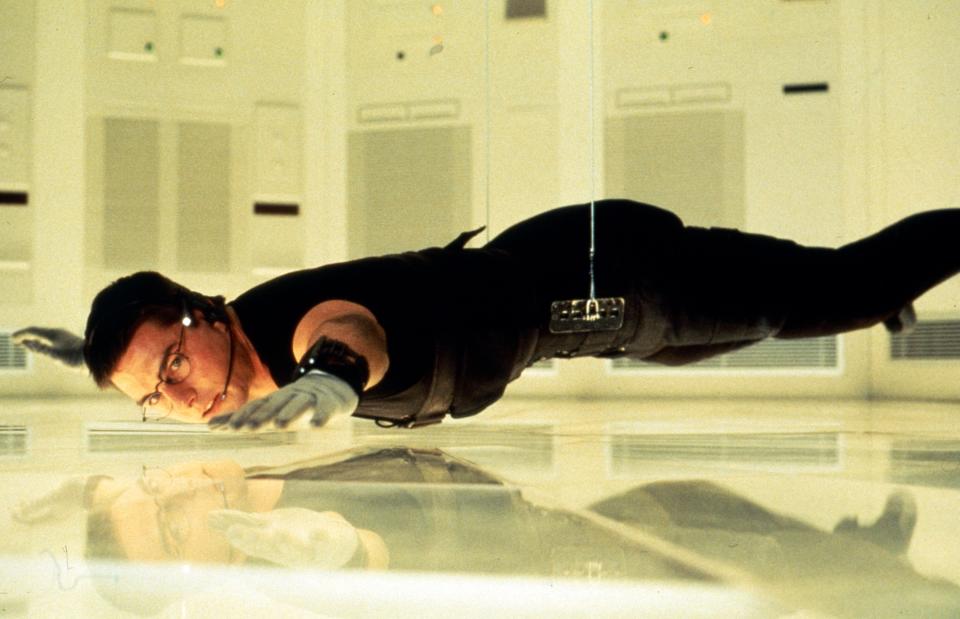
Tom Cruise seamlessly shifted into the action star status era of his career with 1996’s “Mission: Impossible.” Based on the action spy series of the same name, the film franchise has endured over 25 years of billion-dollar profits to date. Cruise transformed into charismatic CIA agent Ethan Hunt who leads the Impossible Missions Force. Brian De Palma directed the first film, originally with Cruise set to reteam with “The Firm” filmmaker Sydney Pollack before De Palma took over.
While the first film was undoubtedly an updated ode to the television series, the subsequent films helmed by John Woo, J.J. Abrams, Brad Bird, and now helmed by Christopher McQuarrie since 2015, became synonymous with boundary-pushing stunts that redefined the genre. And, of course, Cruise was the one really climbing record-high skyscrapers and jumping out of airplanes as Hunt. Cruise has been a producer on the franchise since its inception and flexes his vision for the ultimate action sequences possible. Nothing is too “Impossible” for Cruise, and as the franchise eyes its conclusion with the two-parter “Dead Reckoning” films, slated for 2023 and 2024 releases, Cruise will no doubt conclude his career-making turn as Hunt spectacularly. —SB
“Jerry Maguire” (1996)
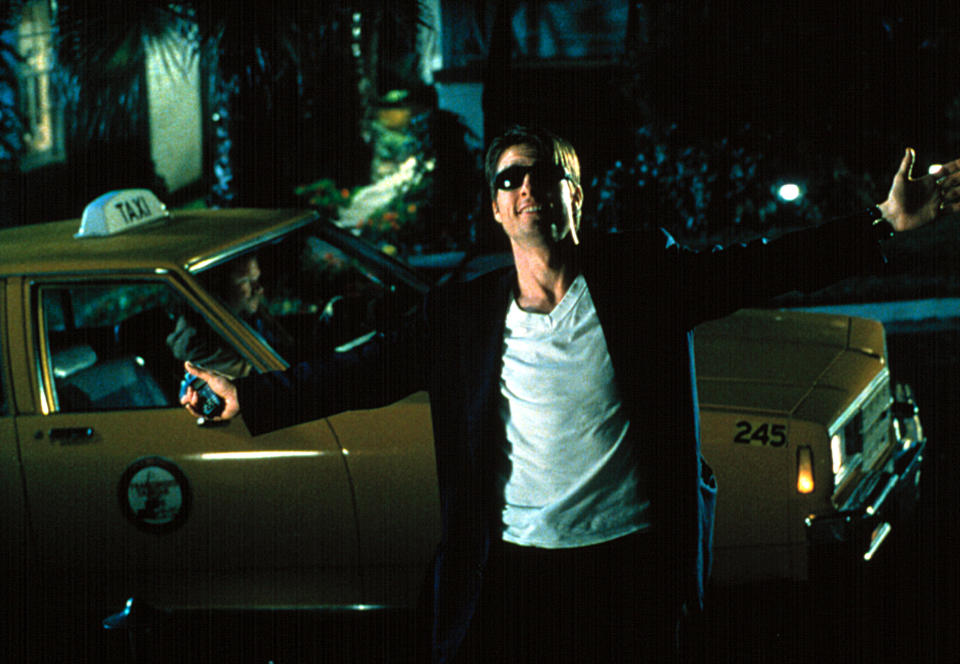
For years, conceiving a great Tom Cruise role was as simple as coming up with a cool job that lots of men wanted. Fighter pilot? Check. Pool hustler? Cruise played one. Hot bartender? Ditto. So it was almost inevitable that he would play a sports agent at some point, and Cameron Crowe gave him a beautiful vehicle to do just that in “Jerry Maguire.” While the idea of a rom-com set in the world of sports may be the greatest marketing ploy of all time, the endlessly quotable film is elevated by a thoughtful script and great performances from Cuba Gooding Jr. and Renee Zellweger. But it’s Cruise’s singular charm that ties the movie together, seamlessly alternating between alpha-male swagger and sentimental romance without ever missing a beat. It’s the kind of performance that reminds cinephiles what a real movie star is. —CZ
“Eyes Wide Shut” (1999)
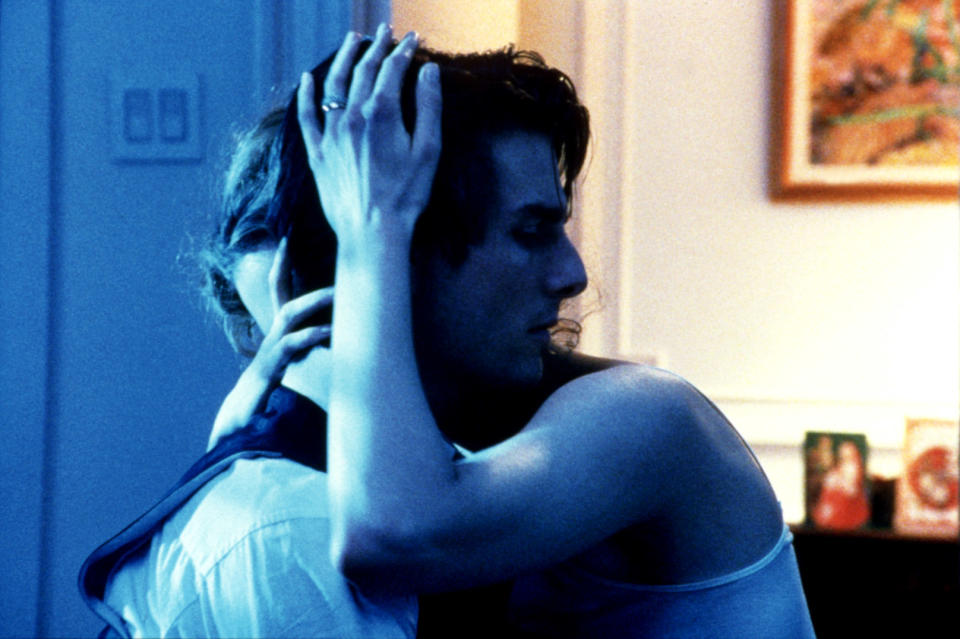
Tom Cruise’s last film with Nicole Kidman before the dissolution of their marriage is his most naked, literally, and for a movie that took over a year to shoot, the breakdown of Bill (Cruise) and Alice (Hartford) probably mirrored the one taking place offscreen. (The actors divorced in 2001.) But like “Magnolia,” “Eyes Wide Shut” also reveals the vulnerable streak clearly existent in Cruise from the beginning, but which a director like Stanley Kubrick had to break open. Bill wanders the streets of “New York,” the fakest-looking Pinewood Studios recreation of the city ever that only lends to the movie’s somnambulant quality. He’s frittering over his wife’s almost-assignation from years earlier, and his jealousy sends him into a long dark night of the soul and, eventually, the pit of a sexual ritual for the One Percent, where he’s outed as a nobody and asked to remove his mask and clothes.
Kubrick stops short of stripping him down to that degree, but the filmmaker disarms Cruise into giving one of his most exposed turns. (Recall an earlier scene in the film, when a marauding pack of frat boys flings gay slurs at Dr. Bill, a moment that calls the character’s, and by extension the actor’s, masculinity into question.) When the masquerade is over, and he finally heads back to a sleeping Alice, only to see the Venetian mask he wore to the orgy displayed on the pillow next to her, he breaks down. “I’ll tell you everything,” he weeps. Kubrick doesn’t show what happens then, instead cutting to an emptied-out Alice smoking blankly, having now absorbed his confession. No matter, as Cruise’s sometimes arch but inevitably denuded performance up to here tells us what we need to know about this offscreen moment. And then, of course, there’s that one thing Bill and Alice need to do as soon as possible. —RL
“Magnolia” (1999)
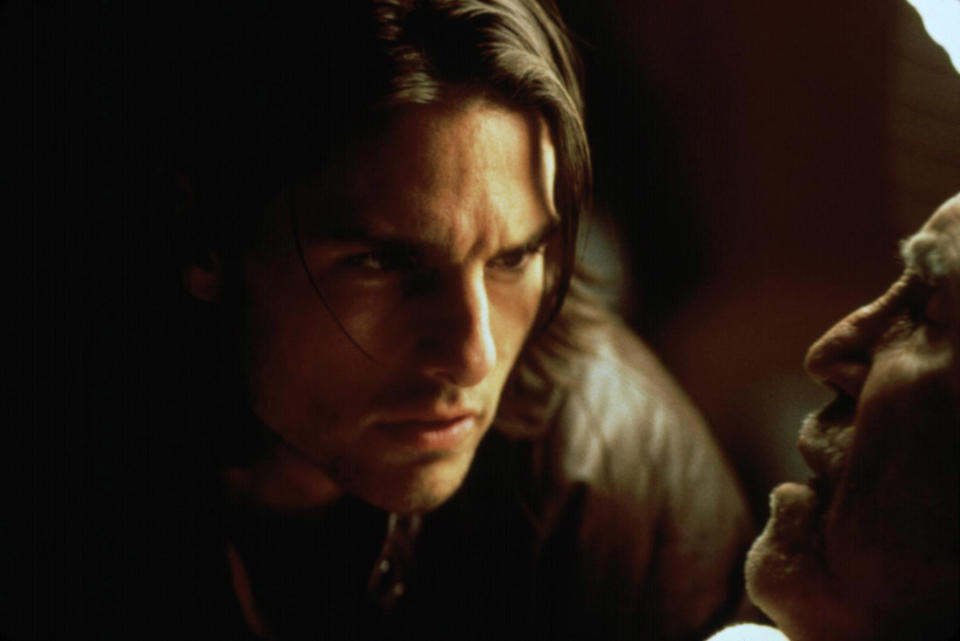
Skeptics may accuse Tom Cruise of lacking in vulnerability, his marquee-ready looks and demeanor always coiffed into place. But look to his two films from 1999 to easily waive that charge. The actor must have been in a particularly vulnerable place at that time, as the “Boogie Nights” fan phoned up director Paul Thomas Anderson while on Stanley Kubrick’s endless “Eyes Wide Shut” production, looking for a collaboration.
Cruise had jitters over taking on the role of Frank T.J. Mackey in Anderson’s sprawling San Fernando Valley love letter “Magnolia,” and that’s unsurprising given the leaps he takes. (And singing Aimee Mann’s “Wise Up” in-camera? How’s that for vulnerability.) The character, a motivational speaker peddling misogynistic pickup tips with wildly slung onstage maxims like “respect the cock” and “tame the cunt,” is all sorts of unpleasant. He’s viciously guarded toward a broadcast journalist interrogating his toxic male persona, preening and jumping around in his underwear in a moment that might anticipate the real actor’s eventual “Oprah” onstage meltdown. Frank dodges questions about his estranged, ailing father (Jason Robards), obviously hiding volcanic levels of trauma. But in a movie where “we may be through with the past, but the past ain’t through with us,” Frank ultimately has to pay his tab. Cruise scored a Best Supporting Actor Academy Award nomination most certainly for a cathartic deathbed breakdown in the movie’s operatic climax, clinging to his cancer-riddled father’s last rattle of life and watching redemption slip away. It’s the most moving single-scene performance of Cruise’s career. —RL
“Vanilla Sky” (2001)
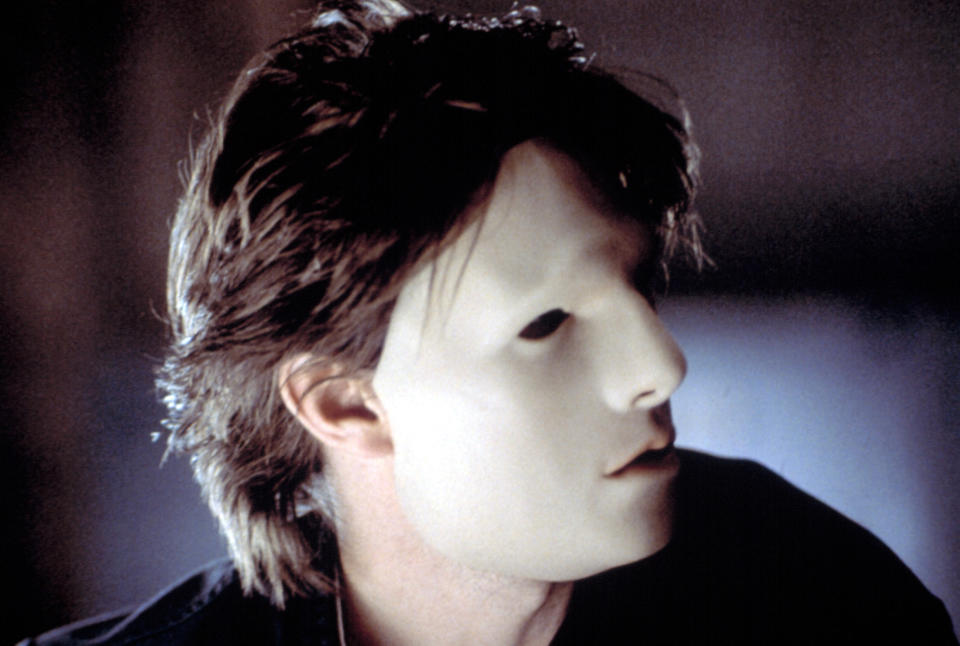
Tom Cruise and producing partner Paula Wagner snapped up the remake rights for Alejandro Amenábar’s “Open Your Eyes” at the 1998 Sundance Film Festival, luring Cameron Crowe to reimagine this twisty and erotic lucid dream. Responses were wildly mixed at the time, though the film now has the cult following it so deserves. Tom Cruise charts the ego death of David Aames, a narcissistic playboy publishing magnate who comes unhinged in the arms of, first, Cameron Diaz, as needy paramour Julie Gianni, and then Penélope Cruz as wilting flower Sofia. An accident with the former leaves David disfigured, and unable to soberly pursue his relationship with the latter — while the disfiguration gives Cruise the chance to de-glam, even when behind a white mask. (“Vanilla Sky” is also notably the last time we saw Cruise in a sex scene or being sexualized by a filmmaker in any way.)
Despite the movie’s constantly shifting timeline, Cruise conveys a compelling and coherent emotional arc, whether withdrawing into depression or huffing the fumes of his megalomania. With “Magnolia” and “Eyes Wide Shut” before it, “Vanilla Sky” capped a period of Cruise opening himself up emotionally to audiences. No other actor could better sell the wincingly cheesy line, with David tipping over a Manhattan high-rise ledge at the end (or beginning?) of his life, “I’ll see you in another life when we are both cats.” —RL
“Minority Report” (2002)
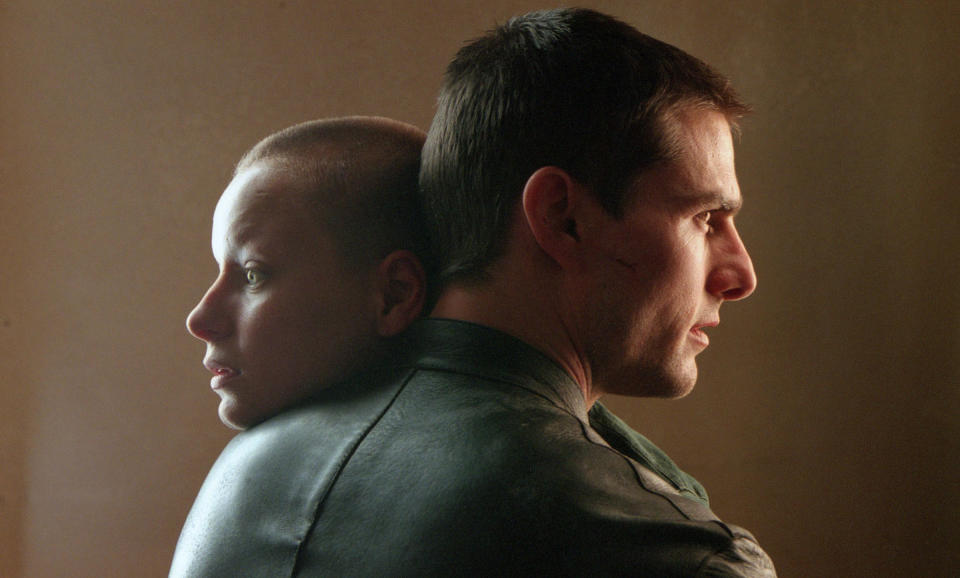
Steven Spielberg and Tom Cruise are arguably the two greatest contemporary champions of high-quality popcorn flicks, so their first collaboration was highly anticipated, to say the least. They first teamed up on “Minority Report,” a smart sci-fi story set in a future where people can be convicted of crimes before they even commit them. Cruise gives an admirably acrobatic (see him jumping across moving flying cars to evade arrest) and emotionally complex (see him reliving and trying to maybe avenge the unexplained loss of his son) performance as John Anderton, a police officer serving as head of his department’s Precrime division. When he learns that he is about to be charged with a murder he has yet to commit, he begins to question the entire department’s value. The movie straddles the line between thought-provoking sci-fi and flashy Hollywood entertainment, and Cruise is able to keep a foot in each world, combining fantastic performances in chase scenes with just enough serious acting to keep the film afloat. —CZ
“Collateral” (2004)
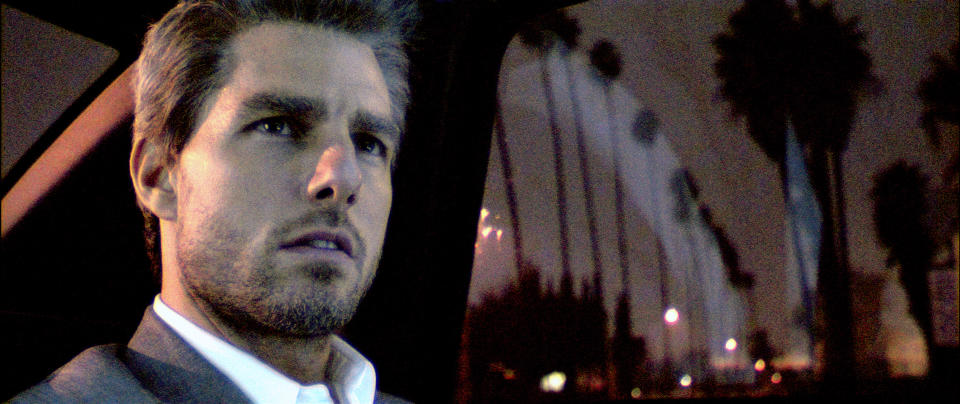
When Tom Cruise gives that unblinking, intense eye contact — come on, you know you’ve seen it in interviews as well as in movies — you can either think this is the most committed, fully realized performer (or, maybe, human?) in existence, or that he’s an “American Psycho” type come to life. So of course he had to play a serial killer at least once. Not just any serial killer, though. One who is a professional and demonstrates the level of professionalism Cruise brings to everything he does himself. His Vincent in Michael Mann’s “Collateral” is meticulous, and he comes up with a unique plan. He’ll hire an ordinary Los Angeles cabbie, Max (Jamie Foxx), to drive him around the City of Angels to carry out his hits in the course of one night. Cruise has been able to do something the past couple of decades that few others have managed: to make action thrillers that are also character studies, and “Collateral” is the ne plus ultra of that combination. His character’s shock of silver hair notwithstanding, this unexpectedly haunting movie is pure gold. —CB
“War of the Worlds” (2005)
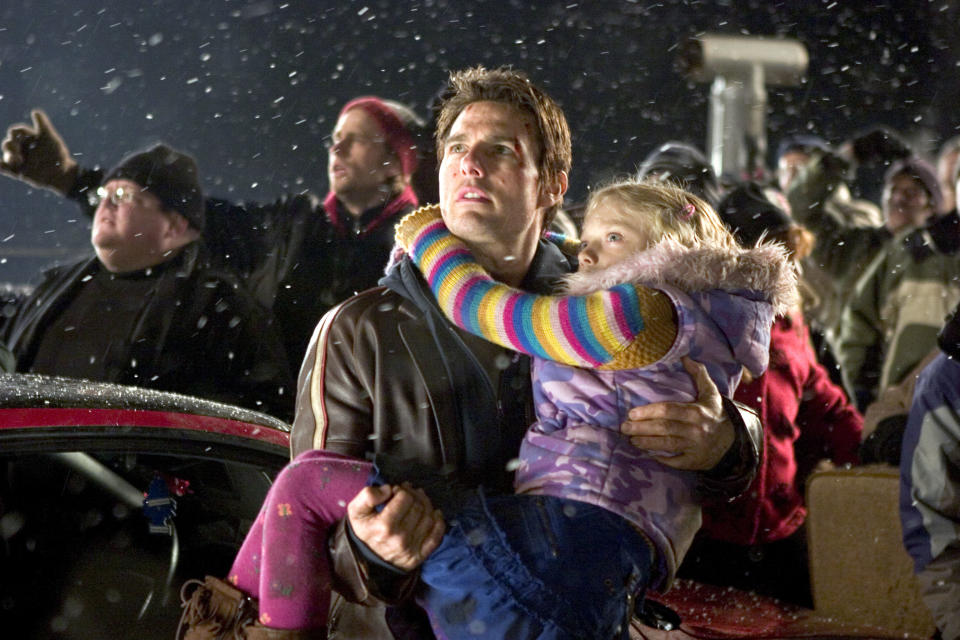
“War of the Worlds” sees Cruise once again headline a big budget action movie, but his character Ray stands worlds apart from the Mavericks or Ethan Hunt types of his career. Instead of being a badass action kicker, in Steven Spielberg’s adaptation of H. G. Wells’ landmark science fiction novel, Cruise is a blue collar crane operator: struggling to connect with his two children after splitting with his wife, and forced to protect them after a violent alien invasion. Although the spectacle of the film — which many critics then compared to the violence of the Iraq War and the 9/11 terrorist attacks — is what everyone remembers, Cruise grounds it as a convincing everyman, with his simple but heartwarming dedication to protecting his family grounding one of the actor’s most emotional onscreen arcs. —WC
“Tropic Thunder” (2008)
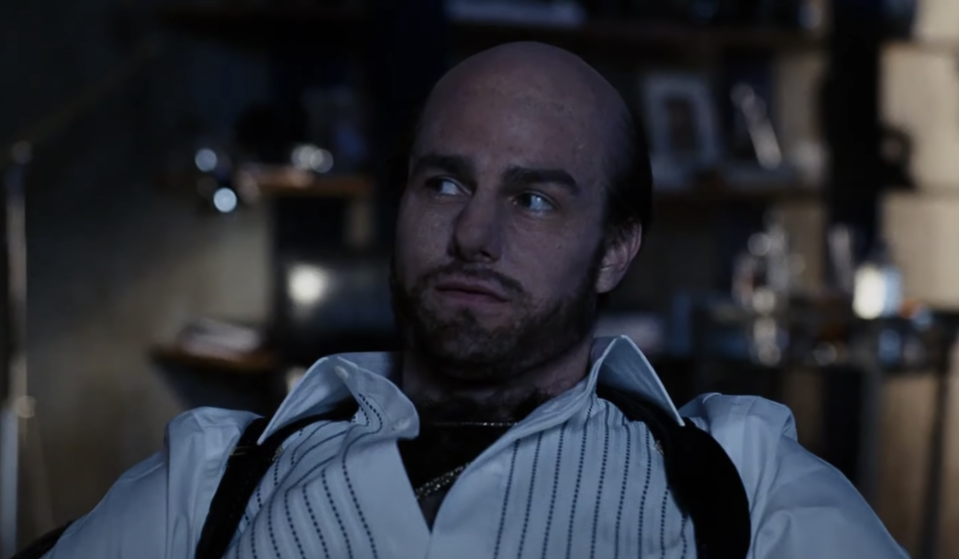
Tom Cruise may have spent much of the 21st century cementing his status as the world’s greatest action star, but his surprise cameo in “Tropic Thunder” proved he can do comedy with the best of them. Cruise donned a fat suit and prosthetics to play studio executive Les Grossman, delivering a masterclass in the creative use of profanity (in addition to some legendary dancing to Flo Rida). Considering how carefully Cruise guards his image, seeing the movie star randomly pop up in a comedy and cut loose with an unhinged performance is a singular cinematic treat. —CZ
“Oblivion” (2013)
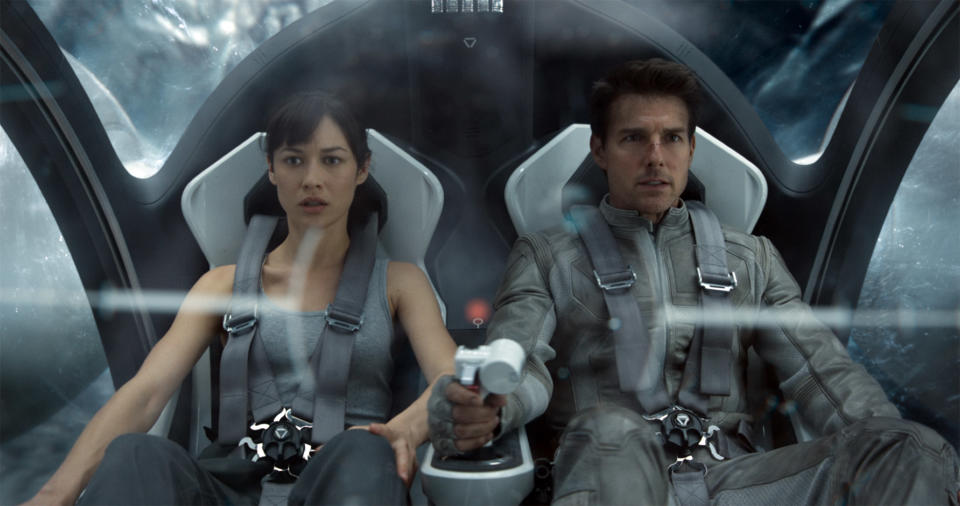
Before Joseph Kosinski brought “Top Gun” into the 21st century, he and Cruise first teamed together for “Oblivion”: an uneven but fascinating sci-fi flick from 2014. Cruise plays Jack, a technician surveying a ruined Earth in 2077 — preparing to finish his work and leave for Saturn, before a chance encounter with another survivor leads him to question his mission. At first glance, the stoic role is one that Cruise could play in his sleep, and that’s not a wholly inaccurate assumption; it’s the type of part he’s played often, and he hits every note as perfectly as he always does. But there’s a tenderness and sadness to Jack – who had his memories wiped but dreams of a life from before the war that destroyed his world — which makes the part stand out from Cruise’s other action work. —WC
“Edge of Tomorrow” (2014)
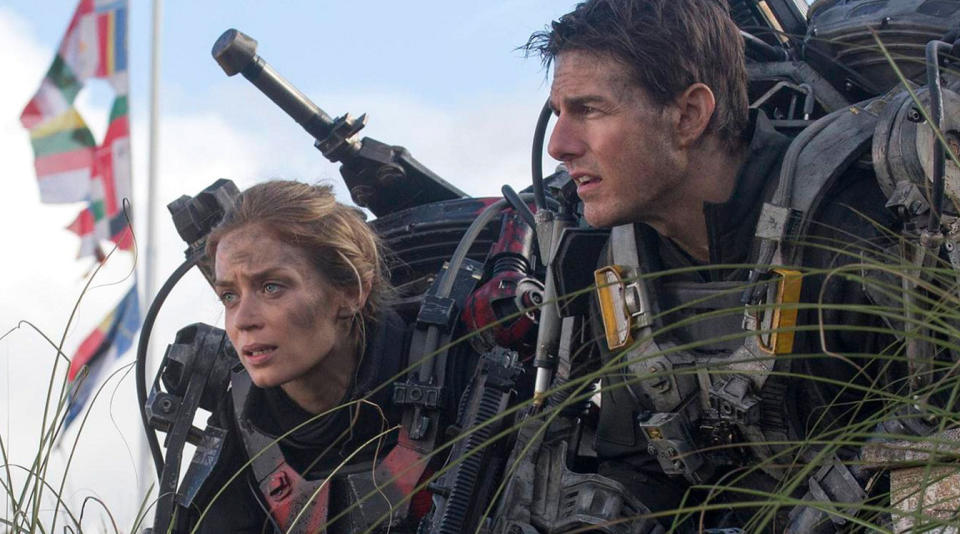
Part of what makes Cruise such a good movie star is that he helps the cast around him shine. As larger-than-life as he can be, he’s also a generous scene partner who builds wonderful dynamics with his co-stars (see how good he and Rebecca Ferguson are playing off each other in the “Mission: Impossible” movies for proof). One of the clearest cases of this is “Edge of Tomorrow,” the highly underrated action film he headlined in 2014. Playing a public relations officer in a future where humanity is at war with alien “mimics,” Cruise is a blast. He’s cast slightly against type as a clueless wimp in over his head; especially after he gets stuck in a time loop where he repeats the same 24 hours after being killed in combat. But the best performance in the film is from Emily Blunt as the seasoned veteran he allies with, and Cruise is more than happy to give her the spotlight she deserves, while still delivering sparky chemistry. –WC
Best of IndieWire
The 28 Best True Crime Shows Streaming Now, from 'Under the Bridge' to 'The Vow'
The 10 Best Doppelganger Films, from 'Dead Ringers' to 'Vertigo'
The Best Cannibal Films of All Time: 'Silence of the Lambs,' 'Raw,' and More
Sign up for Indiewire's Newsletter. For the latest news, follow us on Facebook, Twitter, and Instagram.

